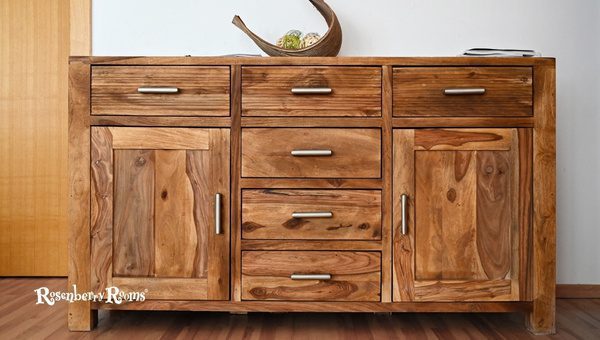You take great pride in the wooden furniture that adorns your home. The scratches, the grime, the dirt - all are discomforting sights to behold.
And there starts your quest on how to clean wood furniture; you want these treasured home pieces to stay looking best and serve you for years to come.
We understand this and want to extend a helping hand in your cleaning journey. That being said, you must comprehend the view that wood furniture is not all crafted equal.
Epitomizing these are differences in finish and type of wood, variables that lend complexity to cleaning procedures.
To ensure you’re treating your wood furnishings in the best possible manner, we’ll cover everything from preventative care to deep cleaning tips.
Contents
When you step back and appreciate the aesthetics wooden furniture brings to your home, you can't help but want to preserve its charm for as long as possible. The secret to this longevity? Regular cleaning.

In-depth care maintains the integrity and beauty of wooden pieces for years - maybe even generations - to come.
Executing due diligence in wood furniture maintenance not only retains their natural splendor but also gives them a few more stories to tell.
Cleaning wood furniture can be a fulfilling task that not only brings out the beauty of the wood but also extends the life of your furniture.

It's important to approach this task with care and knowledge, as different types of wood and finishes require specific cleaning methods.
Regular cleaning and maintenance can prevent damage and keep your wood furniture looking its best.
We'll go through steps that include identifying the material, gathering the right supplies, and employing techniques for dusting, spot cleaning, and deep cleaning, ensuring that your wood furniture remains a cherished part of your home.
Also Read: How To Clean A Rug? [Guide To Keeping Your Carpets Spotless]
The first step in cleaning wood furniture is to determine if your furniture is wood, leather, fabric, or metal.
This identification is crucial because each material demands specific cleaning methods and products. For wood, check whether it's solid wood, veneer, or an engineered product.
Solid wood can typically withstand more vigorous cleaning methods, whereas veneers require a gentler approach to avoid damage.
Understanding the finish type, be it oil, lacquer, or varnish, is vital as it influences the choice of cleaning agents and techniques.
Incorrect identification can lead to improper cleaning methods, potentially damaging the furniture.
Before beginning the cleaning process, it's essential to collect cleaners, cloths, brushes, and protectants suitable for the material.
For wood, you'll need a gentle, non-abrasive cleaner, soft cloths or microfiber towels, and possibly a mild wood soap.
Avoid harsh chemicals that can strip the finish or damage the wood. If dealing with leather or fabric components, use cleaners designed for these materials.
Soft brushes can help get into crevices and intricate designs. Additionally, having wood protectants or polish on hand will help in the final steps to restore shine and provide a protective layer.
The next step is to use a soft cloth or a vacuum with a brush attachment to remove surface dust. Regular dusting prevents the accumulation of grime and protects the finish.
A soft, lint-free cloth is ideal for wiping down wood surfaces, following the grain to avoid scratches. For intricate carvings or hard-to-reach areas, a vacuum with a soft brush attachment can gently remove dust without causing harm.
It's important to avoid using feather dusters or rough materials, as these can leave scratches or scatter dust into the air, only to settle back on the furniture.
When dealing with spills or stains, it's essential to blot stains with a material-appropriate cleaner; avoid rubbing.
For wood, immediately blot up any spills with a dry cloth to prevent watermarks or staining. Use a cleaner specifically designed for wood, applying it to a cloth rather than directly onto the furniture to avoid over-saturation.
Gently dab the stained area; rubbing can spread the stain or damage the finish. For tougher stains, a diluted wood soap might be necessary but always test it on an inconspicuous area first.
Finally, gently clean the surface with a cleaner suited for the furniture's material for deep cleaning. This step is especially important for wood furniture that has accumulated grime over time.
Use a soft cloth and a mild wood cleaner, working in small sections and following the grain. Avoid soaking the wood; a damp cloth is sufficient.
After cleaning, wipe with a dry cloth to remove any residual moisture. For a thorough clean, consider applying a wood conditioner or polish afterward to nourish the wood and restore its natural luster.
Explore More: How To Clean A Microfiber Couch [Freshen Up Every Kind Of Couch]
After cleaning, it is crucial to ensure the furniture is completely dry after cleaning, avoiding heat or sunlight. Excess moisture can lead to warping, swelling, or mold growth in wood furniture.
To dry thoroughly, use a clean, dry cloth to wipe off any remaining moisture gently. Avoid using heat sources like hairdryers or placing the furniture in direct sunlight, as these can cause uneven drying or fading.
It's best to let the furniture air dry in a well-ventilated area. Ensuring thorough drying is a key step in preserving the integrity and appearance of your furniture.
Post-cleaning, it's beneficial to use a protectant on materials like wood and leather to prolong their life and appearance.
A quality furniture polish or wax can enhance its natural beauty and add a protective layer against dust and spills.
Leather furniture benefits from conditioners that keep it supple and prevent cracking. When applying protectants, use a soft cloth and apply in a gentle circular motion, following the manufacturer’s instructions.
This not only enhances the appearance but also adds a defensive barrier, extending the life of your furniture.
For the longevity and pristine appearance of your furniture, regularly dust and clean to maintain appearance and prevent dirt buildup.
Regular maintenance, including dusting and wiping down surfaces with a soft, dry cloth, helps prevent the accumulation of grime and dust, which can eventually lead to damage if left unattended.
In high-use areas, more frequent cleaning may be necessary. This routine care not only keeps your furniture looking its best but also helps in identifying potential issues early, such as loose joints or chipping, which can be addressed promptly.
When it comes to cleaning furniture, use gentle, appropriate cleaners to prevent damage. Harsh chemicals, abrasive cleaners, or those not specifically formulated for furniture can strip finishes, cause discoloration, and weaken materials.
Always opt for cleaners recommended for the specific type of furniture you have. Natural, mild solutions are often the safest choice, especially for delicate surfaces like wood or antique finishes.
Testing the cleaner on a small, inconspicuous area first is always a good practice to ensure it won’t cause any adverse effects.
For valuable or antique furniture, consult a professional before cleaning. Professional restorers have the expertise and experience to advise on the best cleaning methods and products for these unique pieces.
They can also assess the condition of the furniture and suggest any necessary repairs or restorative work.
Attempting to clean valuable or antique furniture without proper knowledge can lead to irreversible damage, so seeking professional guidance is a wise precaution to preserve the integrity and value of these cherished items.
Also Read: How To Wash Lovesac Cover? [Easy Cleaning Guide For 2025]
Generally, dusting your wooden furniture once a week is sufficient to prevent buildup. S deep cleaning should be done every 4-6 months based on the use and location of the piece.
Yes, you can. A solution of equal parts white vinegar and warm water works well for cleaning wood furniture. Make sure to dry it thoroughly afterward to prevent moisture damage.
Yes, lemon juice mixed with olive oil can be used as a homemade cleaner for wood furniture, but it's best to test on an inconspicuous area first to ensure there's no discoloration.
Tough stains like watermarks can be removed using a blend of toothpaste and baking soda. Apply this paste gently onto the stain, then use a soft cloth to rub it off.
Common mistakes include using too much water, skipping dusting prior to cleaning, and neglecting regular maintenance. Also, using harsh chemicals or abrasive cleaners can cause damage over time.
Mastering the craft of cleaning and maintaining your beloved wood furniture isn't an overnight job; it requires dedication and a fair amount of knowledge.
From identifying the right type of wood and understanding its finish to spot an inconspicuous area for testing out cleaning solutions and applying the appropriate protectant, each step is vital for preserving the beauty of your beloved furniture pieces.
Adopt these tips for your regular cleaning routine, and you'll notice how they enhance the life and aesthetic appeal of your furniture.
Consistency is key. Give your wood furniture the care it deserves, and it will return the favor by gracing your home with timeless charm.